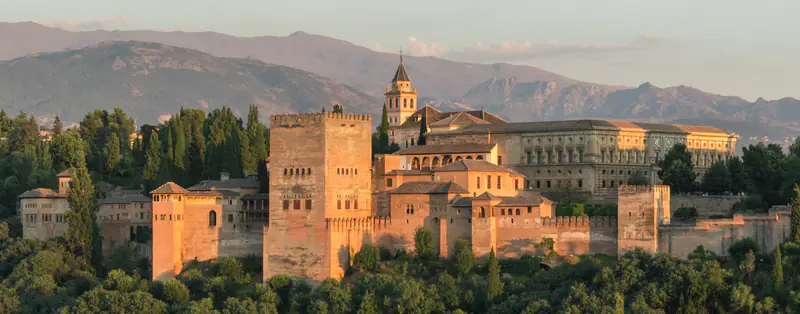UNESCO World Heritage Sites in Spain
Heritage Overview
Spain's UNESCO World Heritage sites represent extraordinary cultural diversity resulting from millennia of civilisational exchanges, encompassing Roman engineering, Islamic architecture, Christian monuments, and distinctive regional traditions shaped by the Iberian Peninsula's strategic position between Europe and Africa. The country preserves exceptional examples of architectural synthesis, prehistoric art, and cultural landscapes that influenced global heritage. Roman aqueducts, bridges, and urban complexes demonstrate sophisticated engineering and provincial prosperity. Islamic heritage showcases the architectural and artistic pinnacle of Al-Andalus, featuring palatial complexes, mosques, and urban planning that preserved classical knowledge whilst advancing mathematics, astronomy, and arts. Christian monuments including Romanesque churches, Gothic cathedrals, and Renaissance monasteries reflect reconquista expansion and religious patronage. Pre-Columbian art in cave paintings preserves humanity's earliest artistic expressions. Regional diversity encompasses Catalan modernisme, Basque country landscapes, and Atlantic fortifications. Colonial-era planned cities demonstrate Spanish urban design principles exported to the Americas. Together, Spain's heritage illustrates complex interactions between Roman, Visigothic, Islamic, and Christian civilisations, architectural innovation across multiple periods, regional cultural identities within unified kingdoms, and Spain's historical role connecting Mediterranean civilisations with Atlantic networks through exploration and colonial expansion.
Essential Information
Visa Requirements
Spain is part of the European Union and Schengen Area. EU, EEA, and Swiss citizens can enter freely with valid identification. Visitors from many countries including the United States, Canada, Australia, Japan, and New Zealand can stay up to 90 days within 180 days without visas. From 2026, travellers from visa-exempt countries require ETIAS (European Travel Information and Authorisation System) authorisation before arrival, valid for three years at €7. Other nationalities should verify requirements with Spanish consulates. Passports must remain valid for three months beyond intended departure from the Schengen Area. Spanish territories outside Europe have separate entry requirements.
Currency
The official currency is the Euro (EUR), adopted in 2002 following the Spanish Peseta. Credit and debit cards (Visa, Mastercard, Maestro) are widely accepted in hotels, restaurants, shops, and tourist attractions throughout Spain, with chip-and-PIN systems standard. Contactless payments are increasingly common. ATMs are abundant in cities and towns, typically without fees for Eurozone cards but charging €2-5 for foreign cards. Cash remains useful for smaller establishments, markets, bars, and rural areas. Tipping is not obligatory as service charges are included, but rounding up or leaving small amounts is appreciated. Currency exchange available at airports, banks, and exchange offices.
Language
The official language is Castilian Spanish (español), spoken throughout the country. Regional co-official languages include Catalan (Catalonia, Valencia, Balearic Islands), Galician (Galicia), and Basque (Basque Country, Navarre). English proficiency is moderate and improving, particularly amongst younger generations and in tourist areas, though less widespread than northern European countries. Tourism professionals typically speak English. Signage in major tourist areas includes English. Regional languages are important to local identities—using them is appreciated in respective regions. Learning basic Spanish phrases (Hola, Gracias) enhances interactions. Spanish people appreciate efforts to speak the language. Madrid and Barcelona have higher English proficiency.
Climate
Spain experiences diverse climates across regions. Mediterranean coastal areas enjoy hot, dry summers (25-35°C) and mild winters (10-18°C). The interior plateau features continental climate with hot summers (30-40°C) and cold winters (0-10°C) with significant day-night variations. Northern Atlantic regions (Galicia, Basque Country) experience maritime climate with mild temperatures, higher rainfall, and cooler summers. Southern Andalusia has the hottest temperatures, regularly exceeding 40°C in summer. The Canary Islands enjoy subtropical climate year-round. Spring (April-June) and autumn (September-October) offer ideal conditions for heritage tourism across most regions, with comfortable temperatures and fewer tourists. July-August brings peak heat. Winter suits southern areas.

